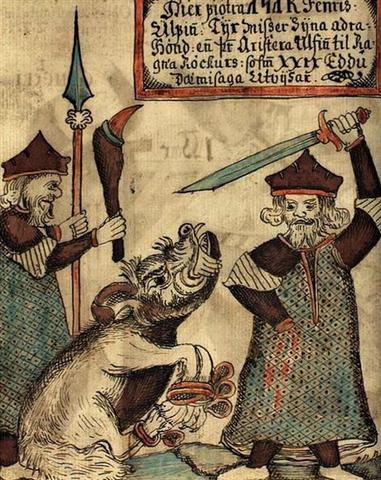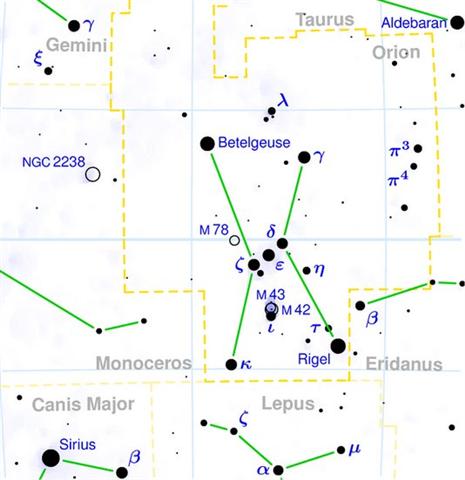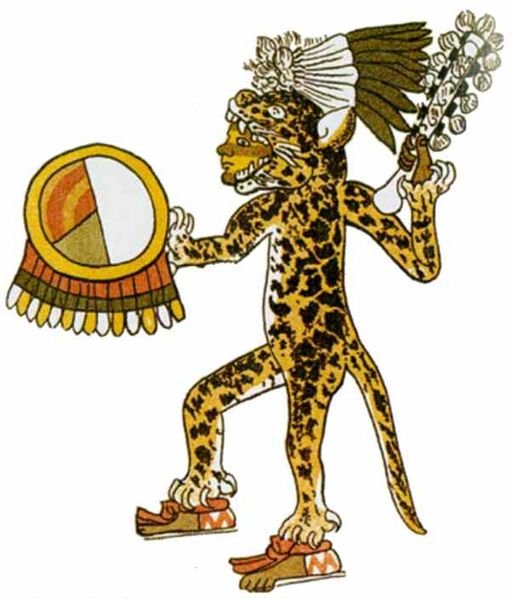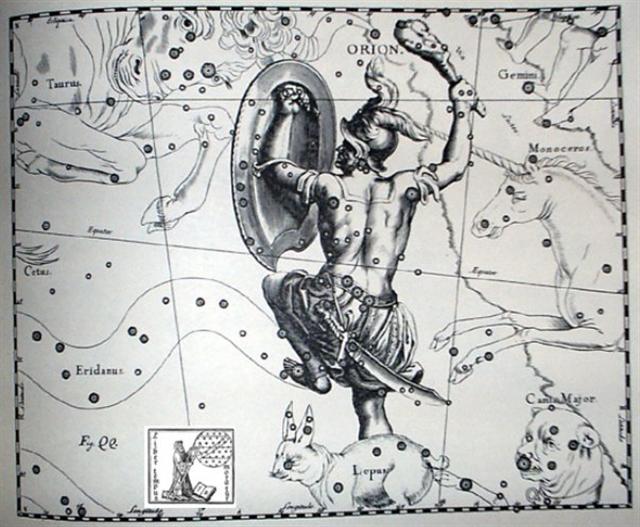Once again. Pharaoh Menkaure lived around 2500 B.C. and this was approximately (2500 + 1842) / (26000 / 365╝) = 61 right ascension days before the time of rongorongo. But when anciently the return of Sirius had marked time in Egypt it was determined from when Sirius returned to visibility, which would have happened at a minimum of 16 nights after its true heliacal day. 61 + 16 = 77. ... The Sothic cycle was based on what is referred to in technical jargon as 'the periodic return of the heliacal rising of Sirius', which is the first appearance of this star after a seasonal absence, rising at dawn just ahead of the sun in the eastern portion of the sky. In the case of Sirius the interval between one such rising and the next amounts to exactly 365.25 days - a mathematically harmonious figure, uncomplicated by further decimal points, which is just twelve minutes longer than the duration of the solar year ... Given the position of heliacal Ain (Bull's Eye) at Ga1-1 we could add 16 days in order to find out where Ain would have returned from being invisible close to the Sun, and at the time of Hyadum II this would have been in APRIL 7 (= MARCH 22 + 16). At the time of Aldebaran the return of Ain would have occurred 4 days earlier in the year, viz. in *APRIL 3, and at the time of rongorongo the corresponding date 'happened to be' June 10: ... Midsummer is the flowering season of the oak, which is the tree of endurance and triumph, and like the ash is said to 'court the lightning flash'. Its roots are believed to extend as deep underground as its branches rise in the air - Virgil mentions this - which makes it emblematic of a god whose law runs both in Heaven and in the Underworld ... The month, which takes its name from Juppiter the oak-god, begins on June 10th and ends of July 7th. Midway comes St. John's Day, June 24th, the day on which the oak-king was sacrificially burned alive. The Celtic year was divided into two halves with the second half beginning in July, apparently after a seven-day wake, or funeral feast, in the oak-king's honour.
My planetary colours has Mars (magenta) where α in the Wolf constellation (Yang Mun, the South Gate) culminated - both in June 14 and in *APRIL 7. On the other hand - and close to the Full Moon - was the Dog of the Shepherd (which followed the Wolf stars in Draco):
Both the distance from June to December and the distance from *APRIL to *OCTOBER were 'balanced', measuring 366 / 2 = 183 days (in contrast to for instance the measure from January to July). And therefore my date colours (including those for the ordinal numbers of the glyphs in the line) were agreeing in a well ordered manner.
It was not long ago when I noticed in a little footnote of Allen that his culmination dates (which I have copied) were not for the midnights but as observed 3 hours earlier: "In astrology α [Andromedae, Sirrah] portended honor and riches to all born under its influence. It comes to the meridian - culminates - at nine o'clock╣ in the evening of the 10th of November. ╣ All culminations mentioned in this work are for this hour." 165 (June 14) + 3h / 24h * 365╝ = 210 (July 29). 165 (June 14) - 3h / 24h * 365╝ = 120 (April 30). 210 + 183 = 393 and 393 - 45 (= 3h / 24h * 365╝) = 348 (December 14) is a number which 'happens' to coincide with the number of glyphs on side b of the C tablet. On side a we can count day zero + 392 glyphs = 393 days. And as to 280 (*OCTOBER 7) this day number corresponds to (≈) 40 weeks: ... Zeus was the son of Cronos, whom we have securely identified with Fearn, or Bran, the god of the F month in the Beth-Luis-Nion. If one reckons back 280 days from the Winter Solstice, that is to say ten months of the Beth-Luis-Nion calendar, the normal period of human gestation, one comes to the first day of Fearn. Similarly, reckoning 280 days forward from the Winter Solstice, one comes to the first day of the G month, Gore, sacred to Dionysus; Dionysus the vine and ivy-god, as opposed to the Sun-god, was son to Zeus ...
From April 1 (91), where the Chinese pointed at the Wolf (the Opener of the Way, Upwaut) to the date April 17 (107) - when the 'year' of the Wolf had been 'bound' and when η Andromedae had returned to visibility (i.e. the wild Wolf had been tamed, turned into his contrast, the domesticated Dog) there were 16 days.
In other words, at the time of Aldebaran, when Ana-muri was at 0h, this 'pillar at the back side' would have returned to visibility 16 days after *MARCH 21 (80), which was in day 96 (*APRIL 6). At the time of rongorongo precession would have carried the stars 68 positions ahead and Aldebaran would now return to visibility in day number 96 + 68 = 164 (June 13) - and 12 weeks beyond the Julian equinox - which corresponded to (≈) the position of the Pyramid of Menkaure:
And then, by adding 16 also to June 13 (164) we will find when Al Nitak (ζ Orionis) would have returned to visibility, viz. when at the time of Gregory XIII the Sun had reached Sirius and the Full Moon was at Nunki:
The double rim on the Jaguar sorcerer's shield could correspond to that of Orion, and when comparing with the view of Hevelius we could then choose the left variant above, with right ascension days increasing towards the right. However, the Mayas had time running from right to left, and therefore we have to look at the right sorcerer above - with his club in the right hand and left knee uplifted.
|
|||||||||||||||||||||||||||||||||||||||||||||||||||||||||||||||||||||||||||||||||||||||||||||||||||||||||||||||||||||||||











